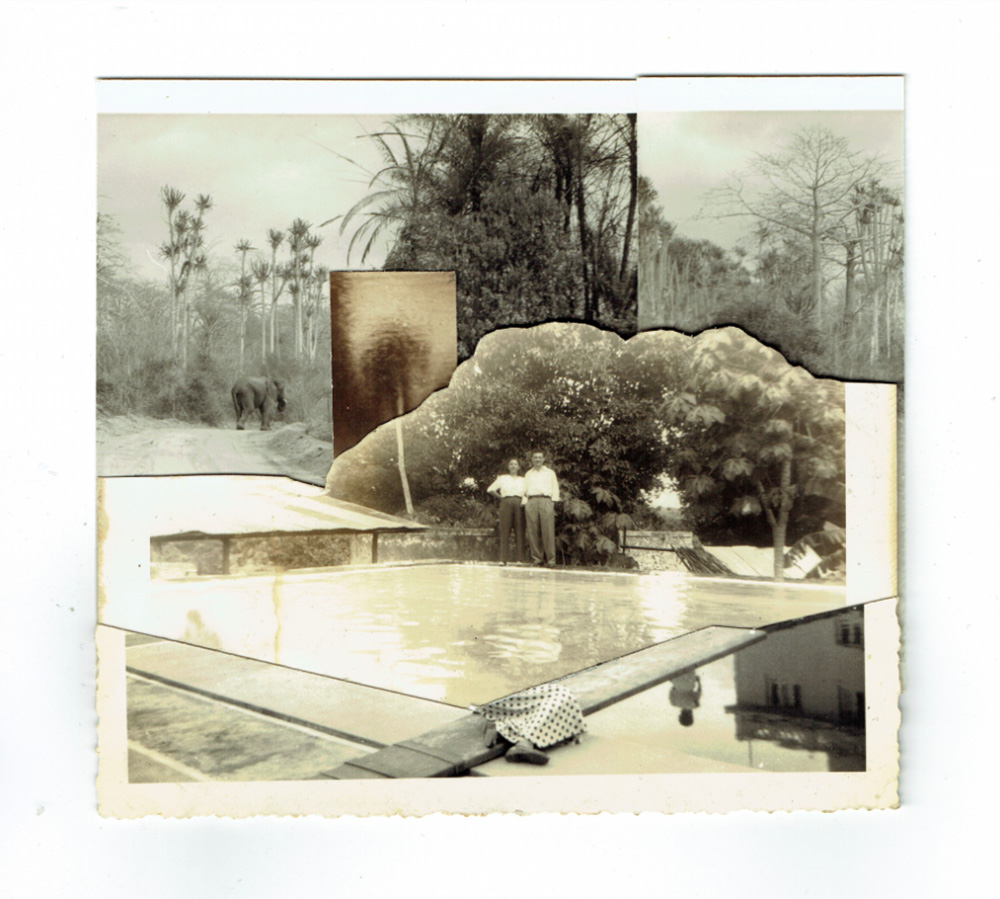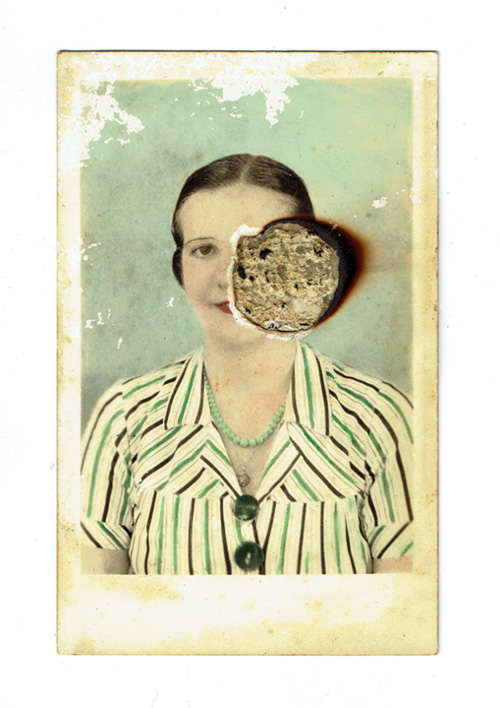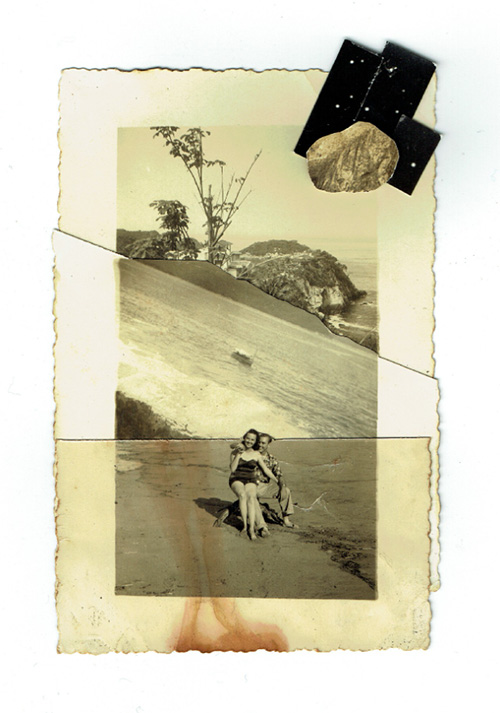interview
RICARDO MIGUEL HERNÁNDEZ ACEVEDO
photographer & collage artist
︎ Havana, Cuba

Could you introduce yourself a bit? Where are you from and what is your background?
My name is Ricardo Miguel Hernández Acevedo. I am a photographer and visual artist born and raised at the corner of the old Presidential Palace, today the Museum of the Revolution, in Old Havana, Cuba. I am also a twin. I can't help saying it because for me it has always been a pride to be physically equal to my brother. His name is Ricardo Ángel Hernández Acevedo and, since we are twins, it is very common for people, in addition to calling me by my first name, to also call me “Jimagua”. We both had an interest in art from a very young age. I taught myself photography about 14 years ago, and since then photography has been a central way to express myself in my career, although I have also worked with video art, installation and cinema. Despite all of this, I have a very strong preference for still images within these three manifestations.
What were some of your earliest artistic experiences?
As I have mentioned before, I started working on photography 14 years ago. In the beginning, when I was studying in a small photography course, I limited myself more to observing the world around me, instead of going out with the camera and taking photos. In fact, you rarely see me with a camera. Usually, after having thought about the idea I want to convey, I look for the scene and very calmly get to work. I make sketches and observe the light. It is in analytical observation that I find what I am looking for. I consider myself more a photographer of ideas than of moments. Of course, between one idea and another there are different aesthetic and conceptual interests that lead me to operate in many ways. Working on a photographic series can take me several days, months or years. This is how a few well-known works were born here on the island, which have been exhibited especially in Europe, such as “Living with the enemy”, in 2006, “Developer”, from 2012, and “Ella”, made between 2014 and 2017.


How did you discover collage for yourself?
I have to confess that I never had any interest in collage. In my studies, I gave priority to other creative forms, such as painting, of which I am a great admirer, and of course photography. In Cuba, it is not very common to find an exhibition where they show collages. There is no collage community or organisation on the island. So if I did see any collage work, it was on the Internet or in a book by a foreign artist. With this I do not mean that there are no artists who do collage in the country. Only that they do not do it as something constant, but rather that it may constitute a complementary stage of the work of a Cuban artist. On top of that, I also saw a lot of poorly assembled collages on the Internet, and that didn't motivate me to start with "cut and paste" work.
This situation changed one day when I studied the European artistic avant-garde of the 20th century. I am fascinated by the collages of Kurt Schwitters, George Grosz, Hannah Hoch, Max Ernst and Raoul Hausmann. From the latter, I appropriated one of his works of sound poetry for my collages. They have a visual and conceptual power that has been difficult for me to find in contemporary art collage. However, I must clarify that I did find contemporary collagists with very good work.
At home, I had a bunch of small, old photographs that were badly damaged. They were not part of my own photographic collection. They were part of purchases that I made a long time ago, and that had included some other documents that were of interest to me at that time. They were all in a drawer full of dust. Forgotten. One day, without thinking, I cut out one of these photos and pasted it on top of another. It was extremely organic. The result was fascinating to me. This is how my work on collage began. After that, I couldn't stop.
How would you describe your style in your own words?
I never consciously thought of my own style. I have always felt that it is a process that evolves over time in terms of form and content.
The first collages I made looked like everyday scenes from anywhere. I focused on making portraits, alternating them with other collages, with diverse situations with a historical, social and political background. I was like that for quite some time. While shaping the scene within the work, I also discovered ways to put them together.
Even if it is important for me to build a scene starting from some photos, more important is the process of searching for those photos. I have spent days rummaging through the drawers and boxes of people from whom I have bought photographs; although I have also bought them in antique markets in Havana. Other times I have found them thrown on the the ground or in a trash can. Sometimes I have bought them and other times people have given them to me. The important thing is that all these photos, before I acquired them, were doomed to disappear. Most of them are very conventional, without any interesting motive within the image, but by separating a fragment and assembling it with others, it is immortalized in a collage.




Is there a recurring theme that you work with often?
For some time now, my works, especially the most recent ones, have been on the subject of landscape. Collage, as a construction of the image, allows me to explore and reinvent myself by assembling and juxtaposing a preconceived dramaturgy of the Cuban and foreign landscape, looking for possible relationships between diverse landscapes.
My landscapes are not only symbolic constructions of different terrains, but they are also the platform to show diverse historical and social situations.
You work with a lot of old photographs. Is there any other medium you'd like to work with?
At the moment I am immersed in my work with the photographic archive. I have tried to experiment with other materials, but for the moment everything has been "an experimentation" and nothing else.


Did Covid and the global chaos it caused affect your work and life? If so, how?
Covid has affected everyone. That is a fact. Since this pandemic began, I have had no mobility whatsoever. Already in itself, the precariousness that exists in my country meant that it was limited by the constant day to day problems: the complex transport situation, the shortage of food products, the lack of information, and the limitations to access it, etc. All this makes you use all your energy looking for how to solve your personal problems. Now with Covid, in addition to the aforementioned problems that have worsened, there is the confinement, the lack of work, a worse economy as a result of the shortage of tourism, and finally the lack of food. Locked up in our houses, waiting for a miracle to happen. It is from this precariousness that I find myself drinking to create my photo collages. Now the dynamics have changed, and everything is on the Internet and on social networks. There has been an increase in online exhibitions, and I try to make the most of the opportunities that virtual space offers me.
How do you plan to evolve as an artist?
That's something I don't think about much. I am not used to devising future strategies. Of course, I worry about promoting my work. Until now, I have been fortunate to exhibit every year inside and outside of Cuba, and to show my work in different publications. But I let everything in my life flow and happen organically. I focus on hard work and let God do his will.




Is collage a popular art form in Cuba? Can you tell us a bit about your local art scene?
Cuba has always been characterized as one of the most important venues for Latin American and Caribbean art. The Island is well known for the Cuban pictorial avant-garde of the 30s and 40s; the revolutionary graphic posters of the 60s and 70s; revolutionary epic photography also from those decades, and the emergence of new contemporary art that developed in the 1980s.
The Cuban art scene is rich in its variety and breadth. Even so, for reasons I don't know, collage did not fit into the Cuban artist's creation the same way painting, sculpture, and photography did, or as it did in other countries in America and Europe. There has never been an organisation or group of collage artists. It was part of the creative process of some artists throughout our history though. For example, there are two very isolated cases, that of the painter Raúl Martínez and the photographer Eduardo Hernández, who have both conscientiously made collages almost throughout their whole careers without neglecting painting and photography. In addition, I think it is necessary to mention a much more isolated case, someone who has become known especially in Europe for his unique work within the Art Brut movement: José Alberto Cadi, aka the diver. Others, to a greater or lesser extent, have worked with collage as part of their work. Artists like Aldo Menéndez, Ezequiel Suárez, Sandra Ceballos, Glexis Novoa and Nelson Villalobos come to mind.
Who are some living local artists, collage or not, who you think we should know about?
Undoubtedly, two artists with extensive careers who have worked on collage (very good collages, too) are Eduardo Hernández and Nelson Villalobos. The first with a marked homoerotic discourse in Cuban photography, and the second with a very interesting pictorial aesthetic in which there is a great interest in cubism, the European avant-garde of the 20th century, and North American popular art.
Other artists with interesting works in collage, and from my generation, are Evelyn Aguilar Sánchez, Michel Armenteros, Nelson Barrera and Julio Llopis.
Ricardo Miguel Hernández Acevedo ︎ ︎
interview & translation: Petra Zehner